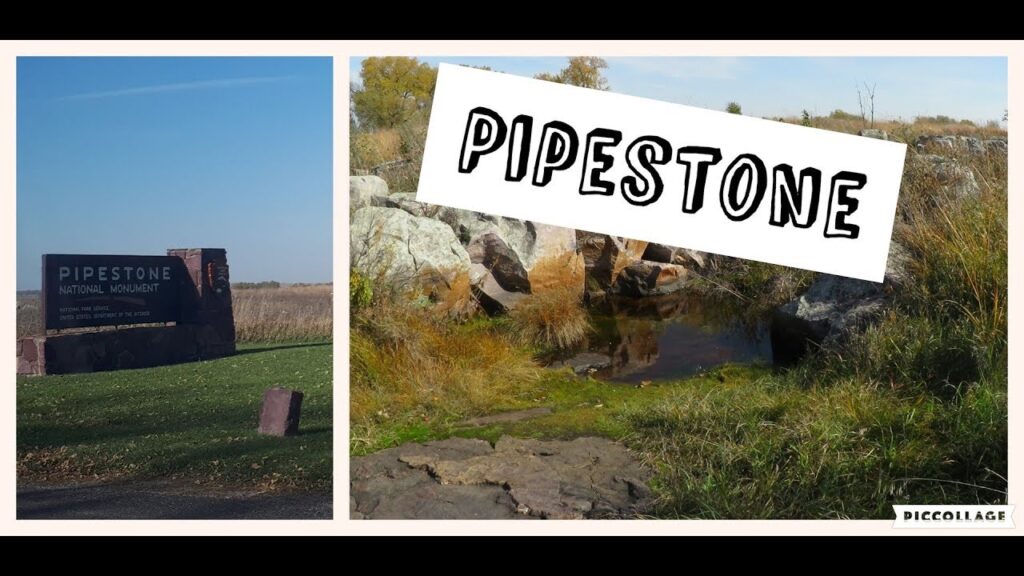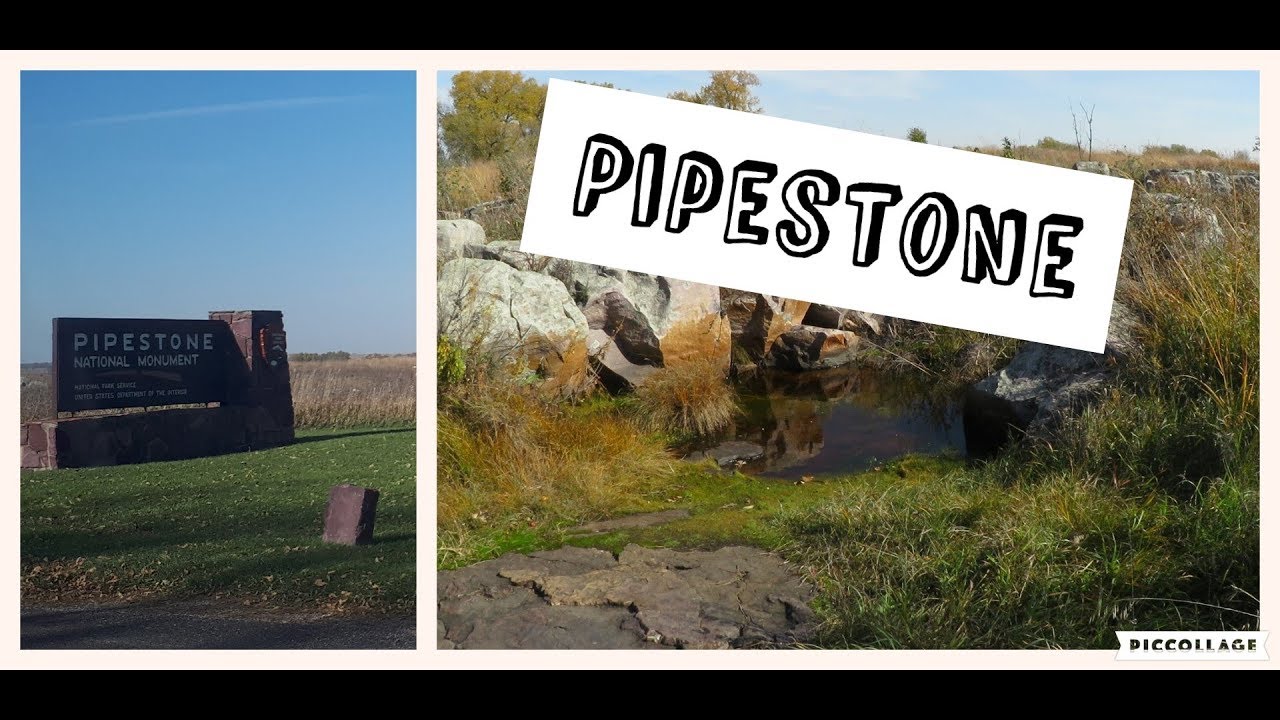
Pipestone, USA: A Journey Through History, Culture, and Sacred Lands
Pipestone, Minnesota, USA, is more than just a dot on the map; it’s a place steeped in history, culture, and spiritual significance. Known primarily for the red pipestone found in its quarries, this region holds a unique place in Native American tradition. The city of Pipestone and the surrounding Pipestone National Monument offer a glimpse into the past, a connection to the present, and a pathway to understanding the enduring legacy of the indigenous peoples who have called this land home for centuries.
The Significance of Pipestone
The red pipestone, also known as catlinite, is a soft, easily carved stone found in only a few locations in North America, with the primary source being Pipestone, Minnesota. For many Native American tribes, this stone is sacred. It is used to craft ceremonial pipes, which are integral to their spiritual practices. The act of smoking a pipe is a sacred ritual, a way to connect with the Great Spirit and to seal agreements. The pipe itself is a symbol of peace, unity, and communication.
The quarries at Pipestone National Monument are not just a source of stone; they are a living testament to the shared heritage of many tribes. Under the 1858 Treaty, various tribes retained the right to quarry pipestone, a right that continues to this day. This treaty ensured that the sacred quarries remained accessible to those who held them in reverence.
Pipestone National Monument
Pipestone National Monument, established in 1937, protects the pipestone quarries and the surrounding prairie landscape. The monument serves as both a historical site and a cultural center, offering visitors the opportunity to learn about the significance of pipestone and the traditions of the Native American tribes who use it. The visitor center features exhibits that explain the geology of the pipestone, the history of the quarries, and the cultural significance of the pipes. Demonstrations by Native American artisans showcase the craftsmanship involved in creating these sacred objects.
The monument also includes hiking trails that wind through the prairie, providing a chance to experience the natural beauty of the region. These trails offer views of the quarries and the surrounding landscape, allowing visitors to connect with the land in a meaningful way. Wildlife abounds in the area, providing opportunities for birdwatching and nature photography. The tallgrass prairie ecosystem is also an important part of the monument, showcasing the natural biodiversity of the region.
Visiting Pipestone National Monument
Planning a visit to Pipestone National Monument requires some consideration. The monument is open year-round, but the visitor center hours may vary depending on the season. It’s always a good idea to check the National Park Service website for the most up-to-date information. Admission to the monument is free, but there may be fees for certain activities or programs.
When visiting Pipestone National Monument, it is important to be respectful of the sacred nature of the site. Visitors are asked to stay on designated trails, avoid disturbing the quarries, and refrain from collecting any rocks or artifacts. Photography is generally allowed, but it is always a good idea to ask permission before photographing Native American artisans or ceremonies. Understanding and respecting the cultural significance of the site is crucial for a meaningful visit.
The City of Pipestone
The city of Pipestone, located adjacent to the National Monument, offers a glimpse into the history and culture of the region. The city’s historic downtown area features buildings constructed from locally quarried quartzite, a hard, durable stone that gives the city a unique character. Many of these buildings are listed on the National Register of Historic Places, reflecting the city’s rich architectural heritage.
The Pipestone County Museum provides further insights into the history of the region, showcasing exhibits on the early settlers, the railroad, and the development of the city. The museum also features displays on the Native American history of the area, providing a broader context for understanding the significance of Pipestone National Monument. [See also: Understanding Native American History].
Several local businesses in Pipestone sell pipestone pipes and other Native American crafts. These businesses often work directly with Native American artisans, ensuring that the products are authentic and ethically sourced. Purchasing a pipe or other craft item can be a meaningful way to support the Native American community and to take home a piece of Pipestone’s history. However, it is crucial to ensure that any purchase supports ethical and sustainable practices.
The Geology of Pipestone
The geology of Pipestone is as fascinating as its cultural history. The red pipestone, or catlinite, is a type of argillite, a fine-grained sedimentary rock composed primarily of clay minerals. It is distinguished by its characteristic red color, which is due to the presence of iron oxide. The pipestone is found in a layer sandwiched between layers of quartzite, a hard, durable rock that protects the pipestone from erosion.
The formation of the pipestone dates back over a billion years, to the Precambrian era. During this time, the area was covered by a shallow sea, and sediments were deposited on the seafloor. Over millions of years, these sediments were compressed and hardened into rock. The unique geological conditions that led to the formation of pipestone are not found in many other places in the world, making Pipestone, USA, a truly special place.
The Future of Pipestone
The future of Pipestone, USA, depends on preserving its cultural and natural resources. Pipestone National Monument plays a crucial role in protecting the pipestone quarries and the surrounding landscape. The National Park Service works closely with Native American tribes to ensure that the quarries are managed sustainably and that the cultural significance of the site is respected. [See also: Sustainable Tourism Practices].
The city of Pipestone is also working to preserve its historic downtown area and to promote tourism. Efforts are underway to revitalize historic buildings, attract new businesses, and enhance the city’s cultural amenities. By working together, the city and the National Monument can ensure that Pipestone remains a vibrant and meaningful place for generations to come.
In conclusion, Pipestone, USA, is a place of profound historical, cultural, and spiritual significance. From the sacred pipestone quarries to the historic downtown area, Pipestone offers a unique glimpse into the past and a connection to the present. Whether you are interested in Native American history, geology, or simply exploring a beautiful part of the country, Pipestone is a destination that will leave a lasting impression. Visiting Pipestone provides a deeper understanding of the importance of respecting sacred lands and preserving cultural heritage. The enduring legacy of Pipestone, USA, lies in its ability to connect people to the past, to each other, and to the land.
The term “pipestone” itself has become synonymous with the red stone quarried in this region. The history of the pipestone quarries is intertwined with the history of the Native American tribes who have used the stone for centuries. Understanding the significance of pipestone requires acknowledging the spiritual beliefs and traditions associated with it. The red color of the pipestone is often seen as symbolic, representing the blood of the earth and the connection between all living things. The ceremonial pipes crafted from pipestone are not merely objects; they are sacred instruments used to communicate with the spirit world. The act of offering prayers through a pipestone pipe is a powerful expression of faith and respect.
Furthermore, the preservation of Pipestone National Monument is essential for protecting the integrity of the pipestone quarries. The National Park Service is committed to managing the monument in a way that balances the needs of the Native American tribes with the interests of the public. Sustainable quarrying practices are crucial for ensuring that the pipestone resource is available for future generations. Education and outreach programs help to raise awareness about the cultural significance of pipestone and the importance of protecting this unique resource. [See also: The Role of National Parks].
When visiting Pipestone, remember that you are entering a sacred space. Treat the land with respect, and be mindful of the cultural traditions associated with the pipestone quarries. Take the time to learn about the history of the Native American tribes who have called this land home for centuries. Support local businesses that are committed to ethical and sustainable practices. By doing so, you can help to ensure that Pipestone, USA, remains a vibrant and meaningful place for all.

